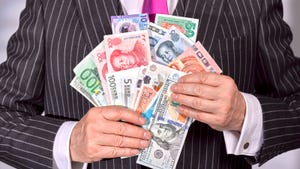Solar-powered solution developed for heating rotational molds
Rotational molding involves placing powdered resin in a mold, clamping it shut, and then heating the tool while rotating it. The resin melts, coats the mold and forms parts. Now, a California company says it can help processors save on their energy costs by heating rotomolds using solar power.
October 7, 2011
The company, called LightManufacturing (San Luis Obipo, CA), is itself a rotomolding processor. The company predicts its "Solar Rotational Molding" (SRM) systems, launched in June 2011, will "transform rotational molding from a smokestack industry that emits over 3.6 billion lb of greenhouse gasses a year into a sustainability model citizen - and one with unusual economic advantages."
The company has trademarked the name of the SRM process and says it has filed U.S. and global patents on the technology. SRM relies on concentrated solar thermal energy to replace the fossil fuel heat sources used in traditional rotational molding. A bank of computer-controlled mirrors reflects sunlight onto a rotating hollow mold, which heats to several hundred degrees in seconds, says the company, and melts the plastic inside. The mirrors adjust their positions as the sun moves across the sky, moving from mold to mold.
"LightManufacturing's SRM process directly harvests heat from the sun, which makes the system affordable to purchase and operate," said Karl von Kries, president of LightManufacturing. "Free, available sunlight and low-cost hardware packages replace the large, expensive hardware components used in traditional rotational molding. Furthermore, SRM systems do not require a building, electrical service or gas lines. Our test facility is set up on grazing land."
LightManufacturing will sell turnkey SRM systems to rotomolders and license its technology to other companies and development agencies, including non-governmental organizations (NGOs). The firm targets the solution for both the developed world and emerging markets where energy resources are limited and economic development is a challenge.
About the Author(s)
You May Also Like


